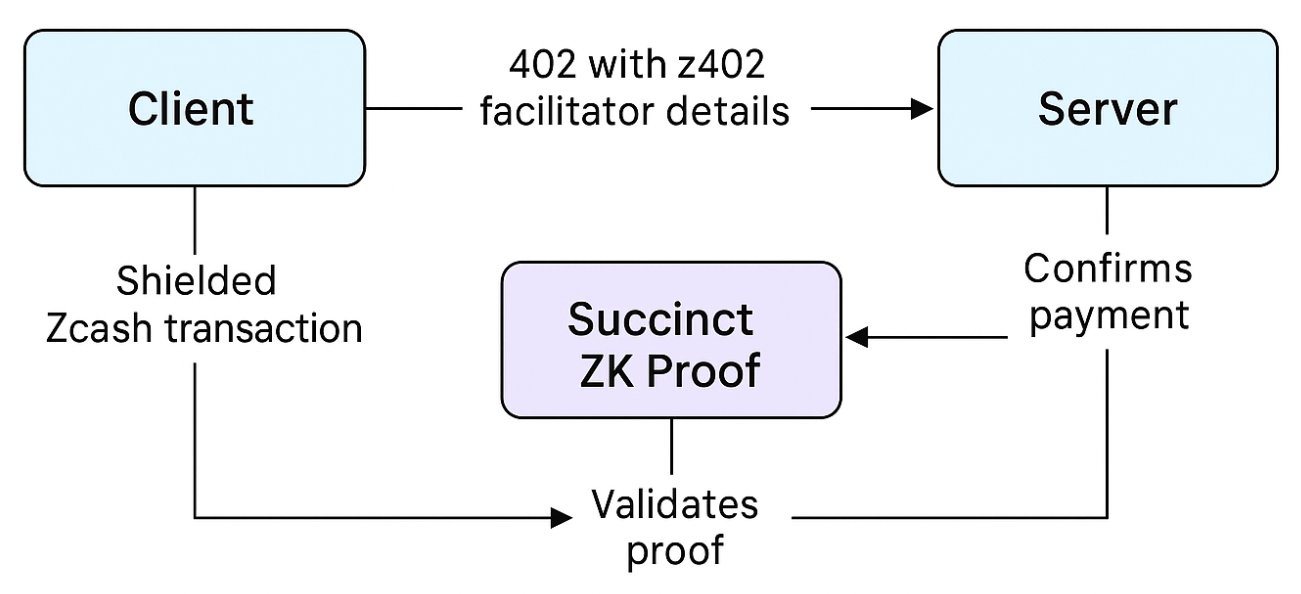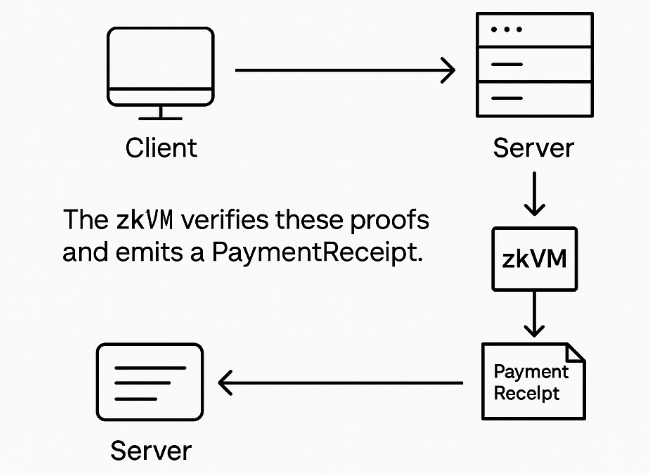.jpg)
The internet was never built for payments. For three decades, HTTP’s 402 Payment Required code sat unused - a relic of an unmonetized web. Recently, @coinbase has revived it as x402 - an open standard that embeds stablecoin micropayments directly into HTTP requests. One line of code turns any API into a pay-per-call endpoint. AI agents, scripts, or browsers can now pay for data, compute, or access in seconds, without accounts or friction.
This is now being touted as the missing link for the machine economy: where AI agents interact and transact on behalf of humans. But without verifiability, automation is opaque. Payments alone don’t establish trust.
This is where ZK completes the system. x402 solves how machines pay. ZK solves how they prove. Together, they define a trust-minimized economy for autonomous intelligence.
x402 extends HTTP without breaking it. When an API call is unpaid, the server responds with a 402 status and payment details. The client encodes a signed transaction (e.g. $0.01 USDC) in a retry header. A facilitator service (like Coinbase) handles settlement and confirmation. The server then delivers the resource.
This turns every web interaction into a potential microtransaction - instant, programmable, and blockchain-agnostic. Developers can deploy it on @Base, @Ethereum, @Solana, or any network that supports the underlying asset. Coinbase reports over 500,000 transactions within a week of launch, much of it driven by AI agent workloads.
The implication is significant: for the first time, HTTP can express economic intent. APIs become natively monetizable. Agents can request, negotiate, and settle value without human mediation.
x402’s core limitation is visibility. Every transaction is traceable - addresses, amounts, timestamps. In a network of autonomous agents, this metadata becomes a surveillance map. ZK proofs reintroduce privacy and verifiability without trust.
Three layers of integration emerge:
(a) z402 - Privacy-Preserving Micropayments
A @Zcash-led extension, z402, routes x402 payments through Zcash’s shielded pool. Transactions remain verifiable via ZK proofs while concealing sender, receiver, and amount. The process mirrors x402’s HTTP flow, but with privacy baked in:

The outcome: frictionless micropayments that are untraceable yet mathematically valid. For AI agents operating autonomously, this means trust without disclosure.
(b) ZK as the Facilitator - Removing the Trusted Middleman
Today’s x402 deployments rely on custodial facilitators like Coinbase to handle settlement and gas abstraction. A zkVM-native facilitator can remove that trust entirely.
Instead of delegating to a third party, the settlement logic runs inside a zkVM, producing a verifiable receipt that both client and server can trust.
Flow:
Client submits a transaction containing:
a payment intent proof (funds or allowance),
an optional service proof (e.g. ZK proof of work or data verification),

Outcomes:
This structure turns the zkVM into a verifiable facilitator layer - the bridge between web-native HTTP calls and blockchain-native proofs. Coinbase’s facilitator model becomes optional, replaced by open, proof-driven settlement.
(c) ZK for “Proof Before Pay”
In AI commerce, payment is only part of the equation. The harder question is did the service actually run?
ZK enables proof-carrying computation - verifiable receipts for digital work.
Several projects such as @Brevis are aiming to demonstrate this with x402 integration. When an agent pays for a model inference, Brevis generates a ZK proof confirming that the correct model was executed on the correct input. Payment releases only when the proof verifies. No trust, no dispute.
This architecture extends to @LazAINetwork, which aims to combine x402 micropayments with @ProjectZKM’s verifiable facilitation layer. Running on @MetisL2 and @GOATRollup, LazAI agents will autonomously trade, analyze, or generate outputs while preserving data privacy and ownership. Each transaction is both a payment and a proof.
The convergence of x402 and ZK forms the foundation for an economy where machines transact, compute, and audit one another in real time. Payments are shielded; computations are provable. Privacy and accountability no longer conflict.
There are already several projects attempting to layer ZK circuits atop x402 to deliver anonymous, compliant payment rails for AI and IoT devices. Meanwhile, @Alt_Layer’s @yq_acc positions x402 as the “payment layer for autonomy”, as explained in his recent article, with ZK serving as the “proof layer” that prevents fraud and manipulation between agents.
As this infrastructure matures, x402 and ZK together may become what HTTPS became for the web: a default security standard. One handles economic expression, the other mathematical verification.
It's becoming increasingly clear that the next internet epoch will not be defined by apps, but by agents - autonomous programs that act, earn, and verify. x402 gives them a payment language. ZK ensures that language cannot be faked.
With zkVMs acting as trust-minimized facilitators, settlement and verification no longer depend on intermediaries. Every payment, proof, and service confirmation can be executed and verified cryptographically, producing a transparent yet private audit trail. Coinbase’s facilitator model may have bootstrapped adoption, but the zkVM model removes the last element of trust.
When these systems merge, the web becomes both economically fluent and cryptographically trustworthy. Every API call, every data feed, every computation - priced, paid, and proven.
This is the logical endpoint of the ZK movement: not privacy for its own sake, but trust without intermediaries, running at machine speed.
x402 gives HTTP a wallet. zkVM gives it a verifier.